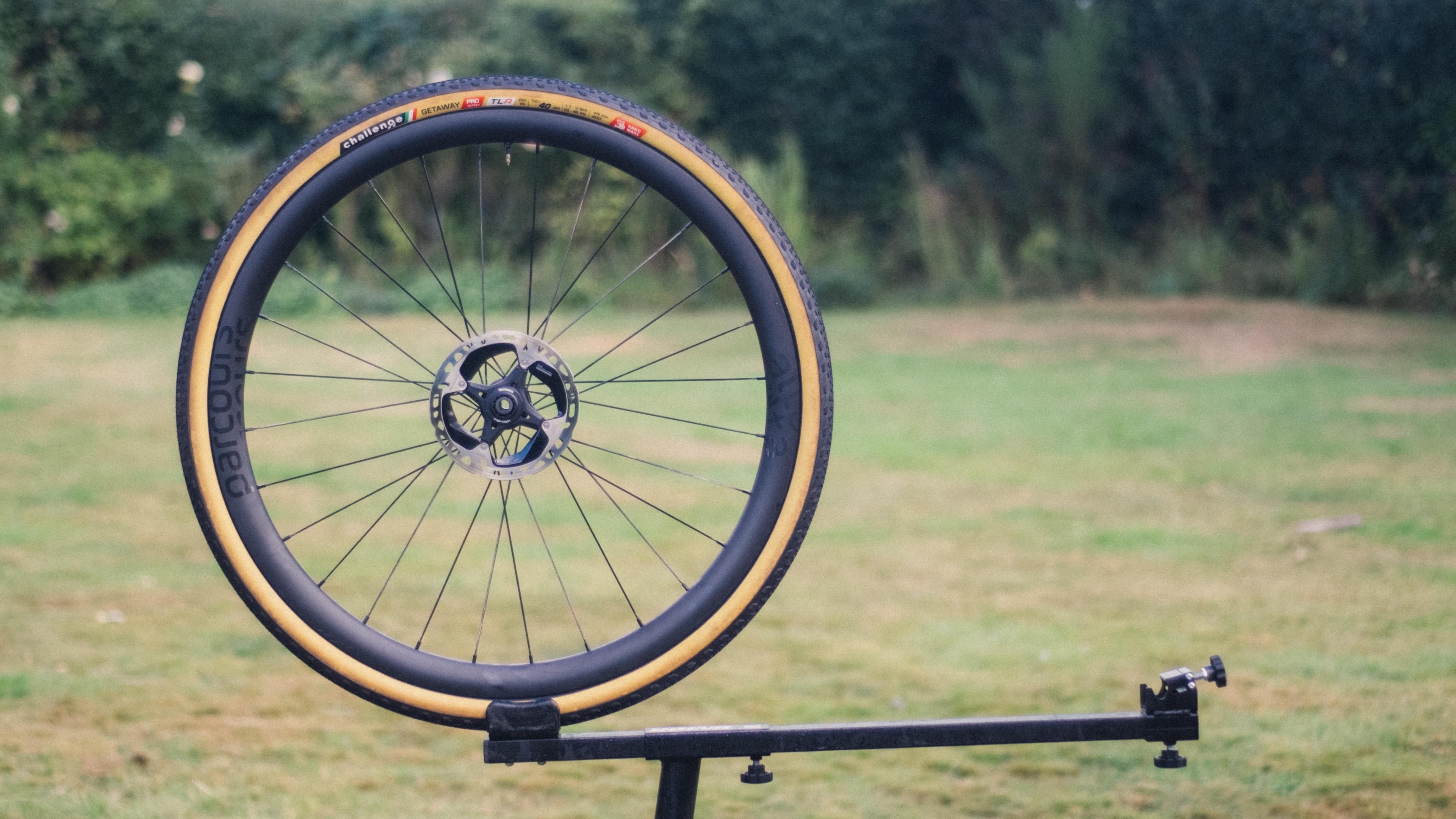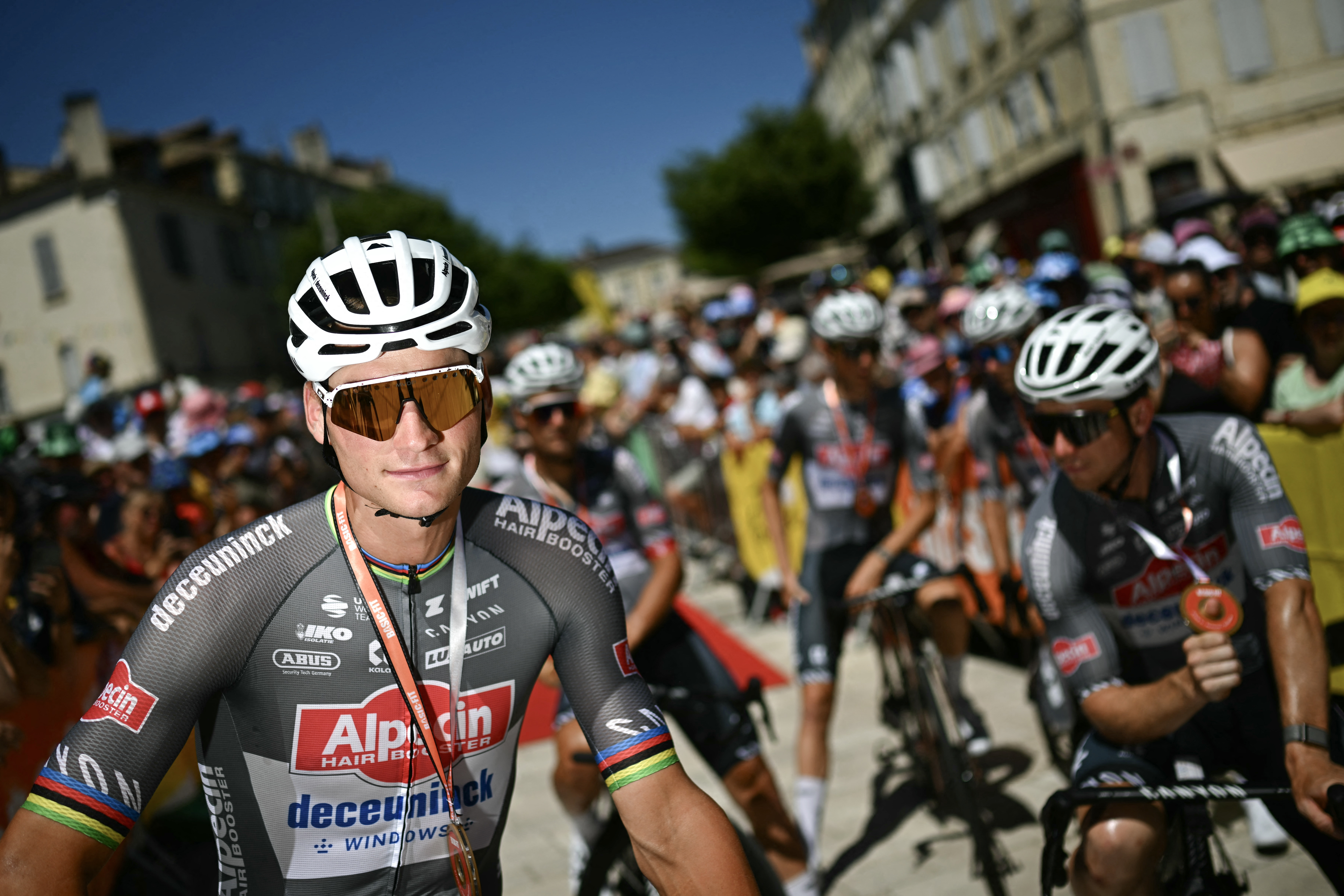Best gravel wheelsets 2025: The best wheels for off-road adventures and racing
The best gravel wheelsets bring a lot to the table when you head off-road, improving ride feel, traction and speed
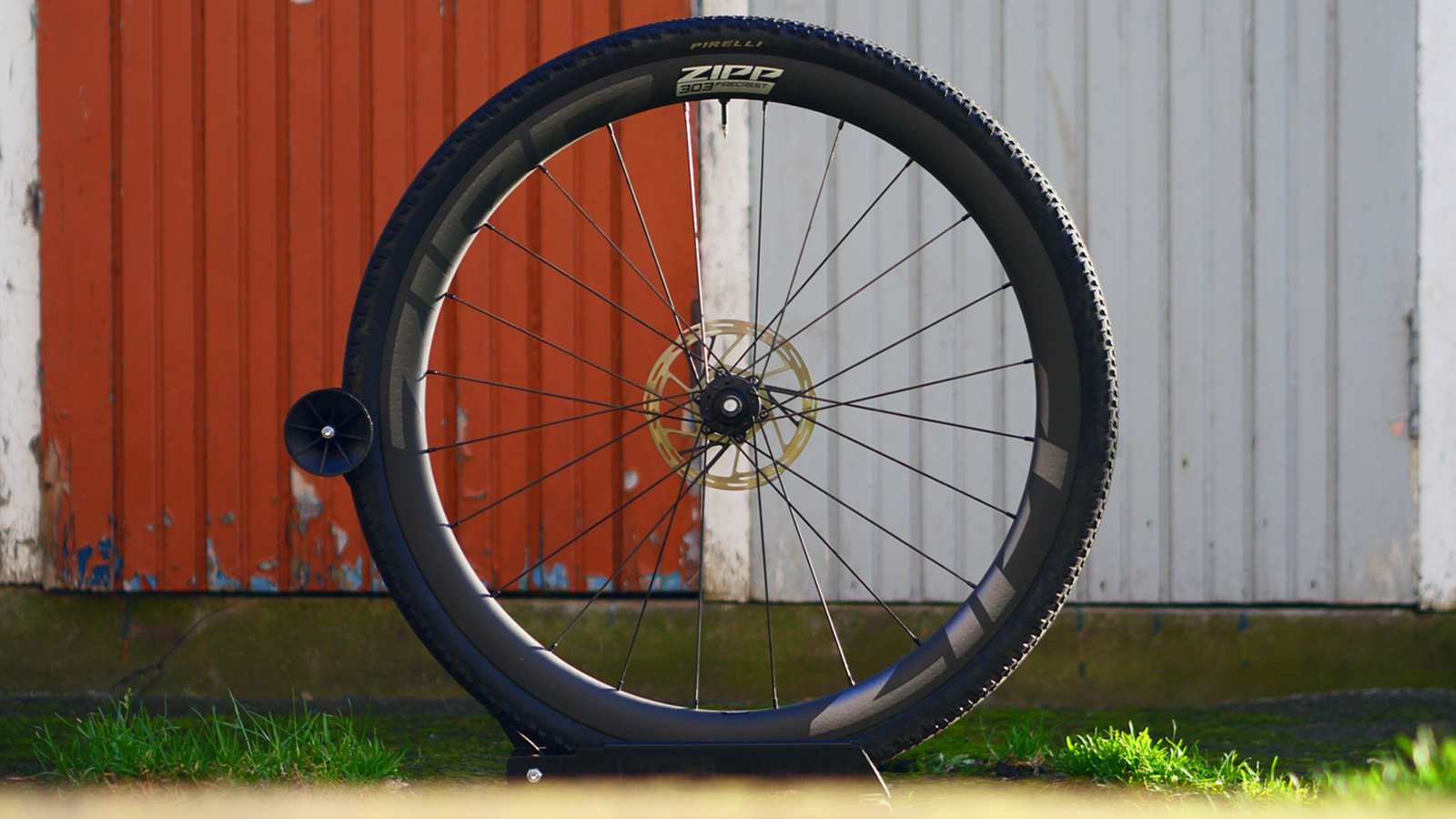
The best gravel wheelsets can help transform the ride and performance of a gravel bike. There are multiple different gravel bike categories now, but whatever type of riding you are doing a wheelset upgrade is one of the biggest upgrades you can make.
During the gravel category ascendancy, before the equipment was as specific and well developed as it is now, even the best gravel bikes came with either road wheelsets that were too narrow for wider tyres or cyclocross wheelsets that are built for slightly different use cases and type of riding. Now we have gravel-specific everything, from the best gravel bike shoes to the best gravel race bikes.
Fast forward a few years and there is a broad spectrum of gravel bike-specific wheelsets to choose from in both 650b and 700c sizes. Current gravel wheelsets are lightweight but strong and wide enough to cope with off-road abuse. They provide a far better fit for the best gravel tyres (particularly tubeless ones) than in years gone by.
If you are still unsure where to start when choosing a new wheelset, we have a useful guide at the bottom of the page to help you make the right decision for your type of riding.
Quick list
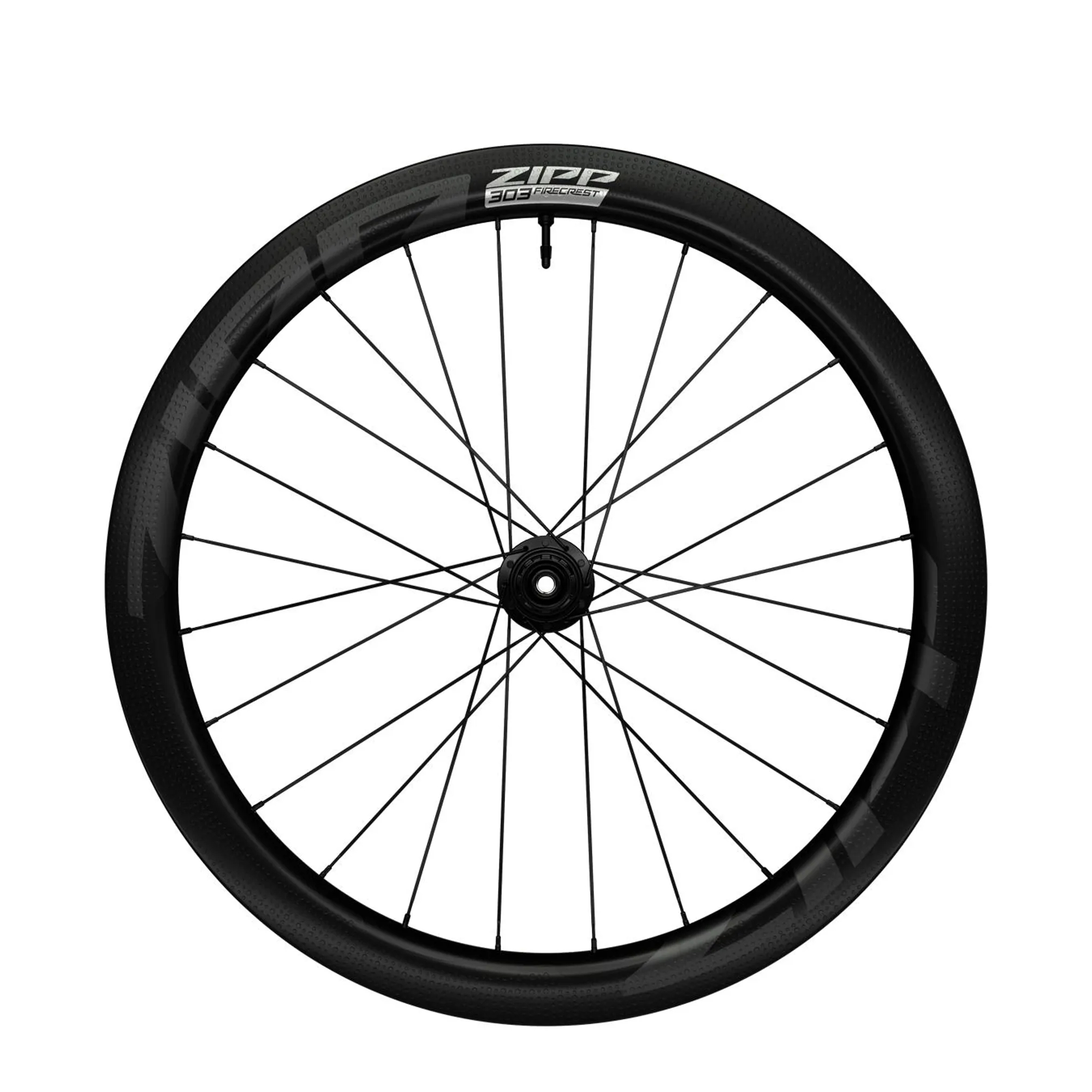
As good on the road as off, the Zipp 303 Firecrest wheelset is stiff, wide, aero and decently lightweight.

An affordable upgrade for gravel riders looking for a carbon wheel upgrade.
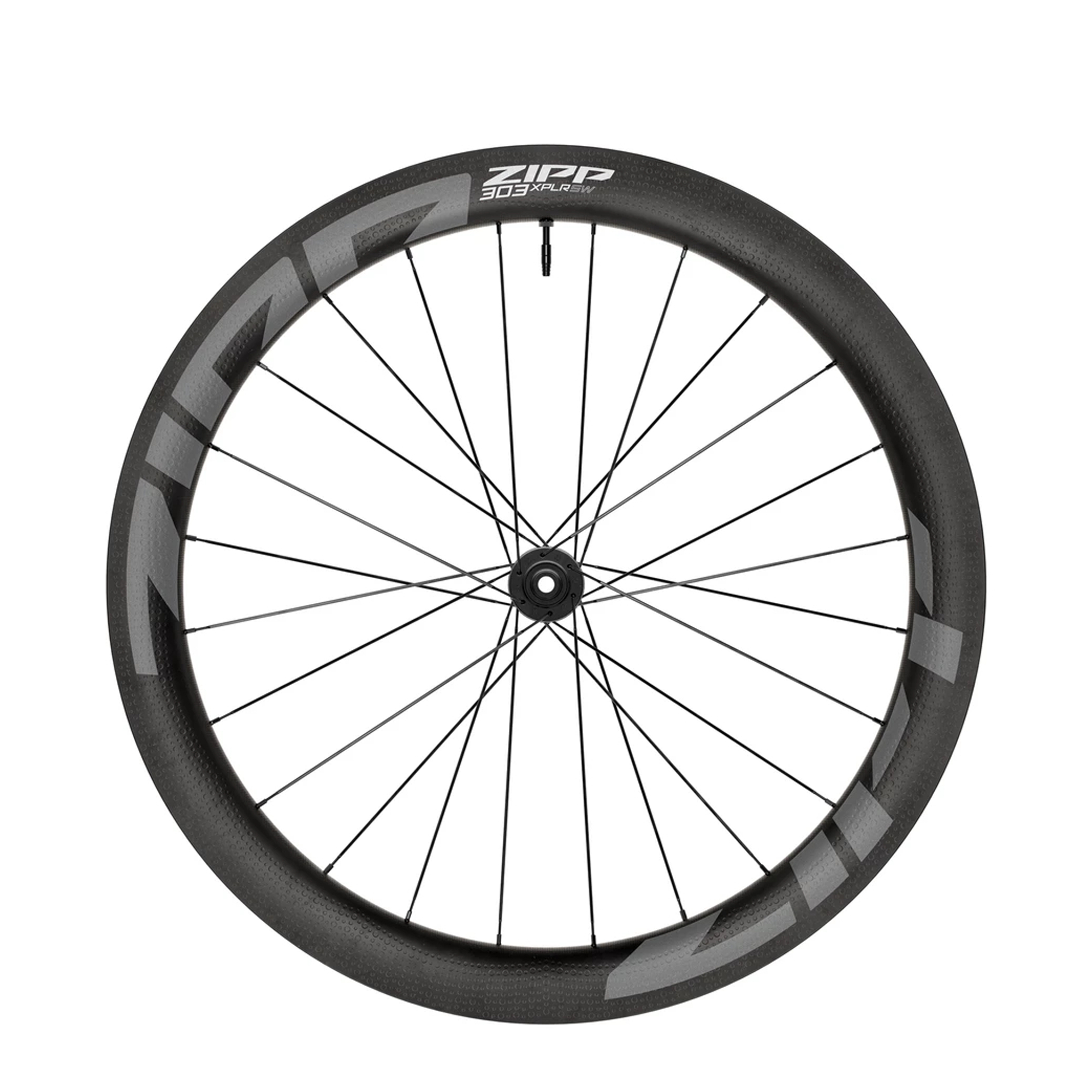
One of the most radical gravel wheels on the market, they are designed to be as fast as possible.
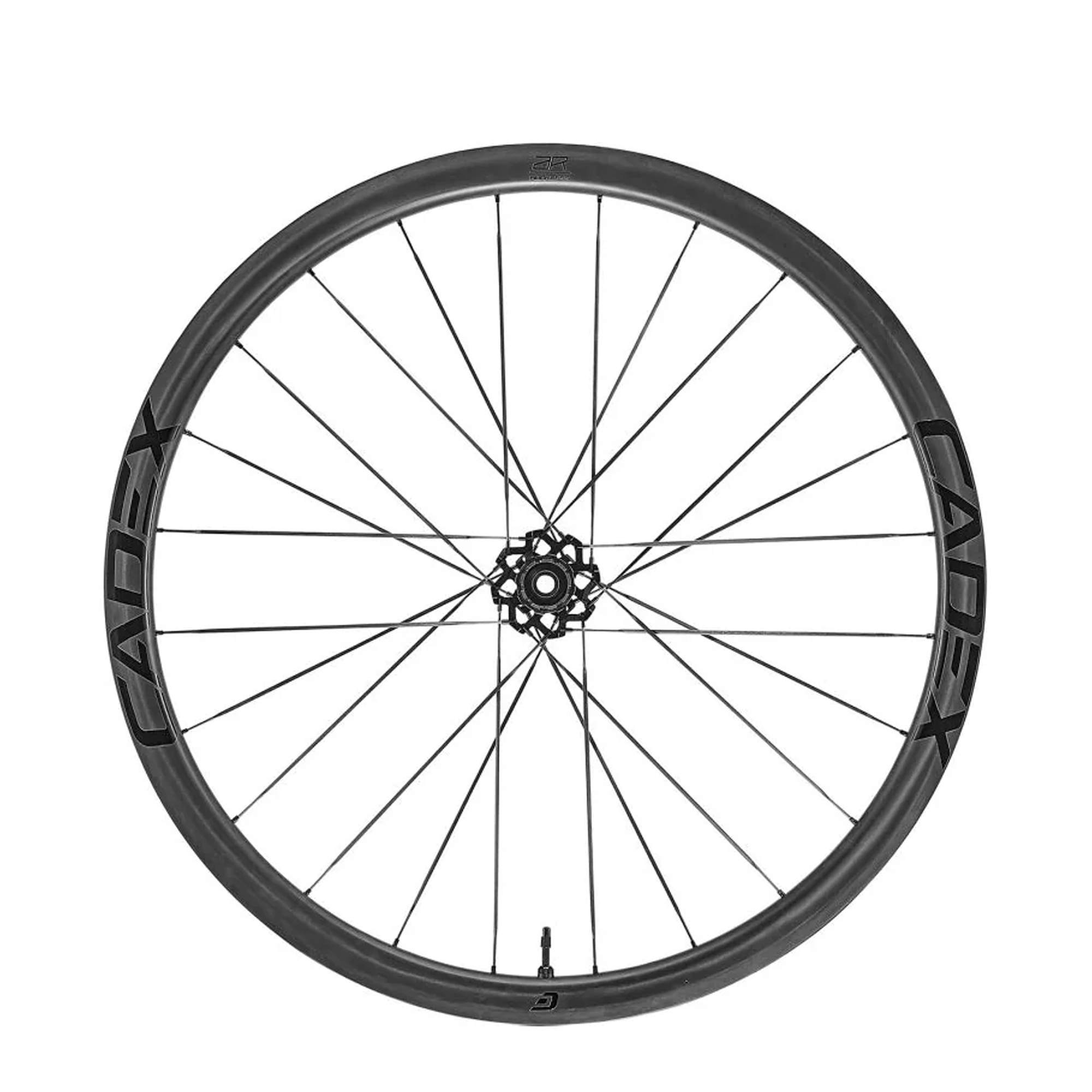
Low weight and fast engagement give these wheels a lively and snappy ride feel.
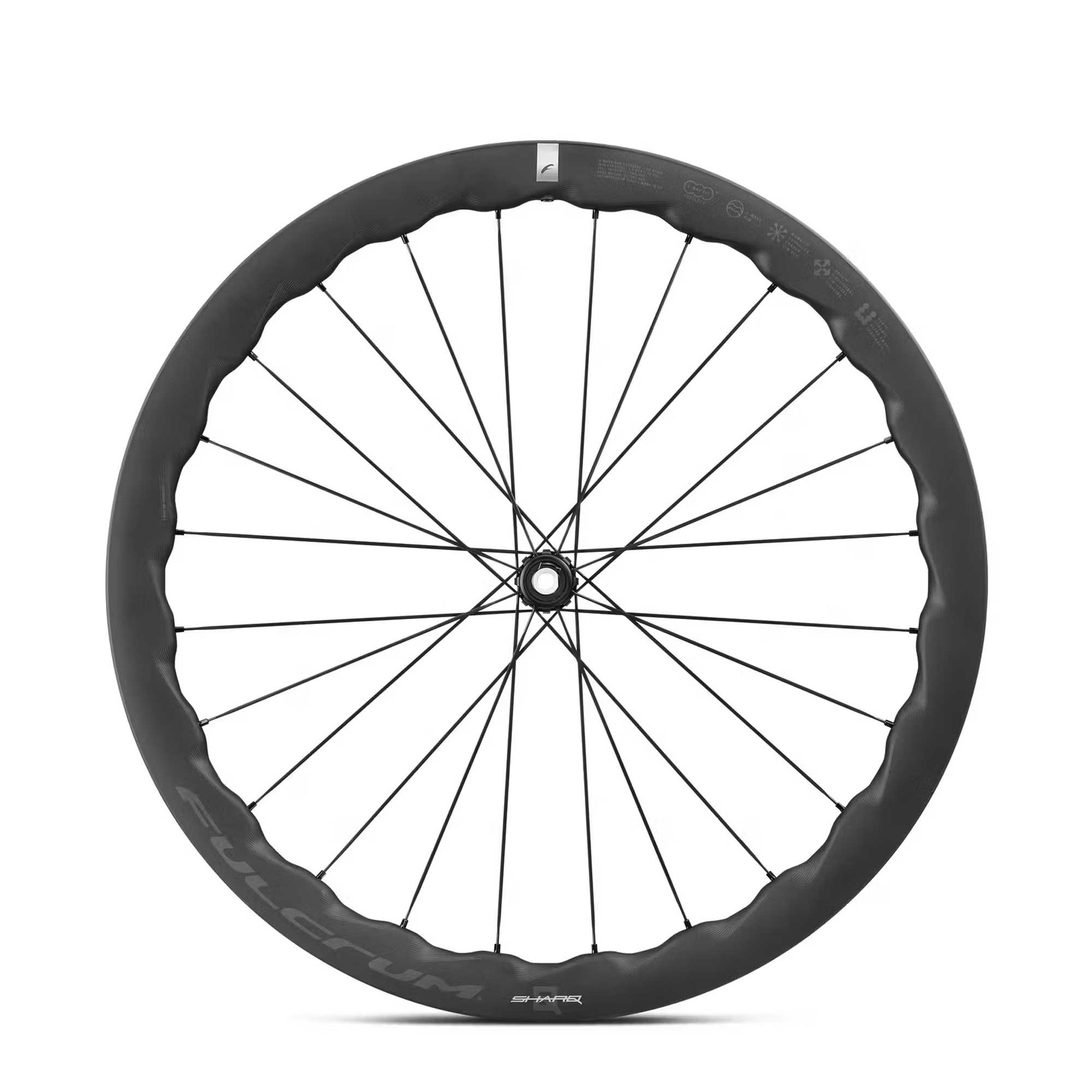
If you are looking for equal parts on and off-road performance this is an exceptional wheelset.
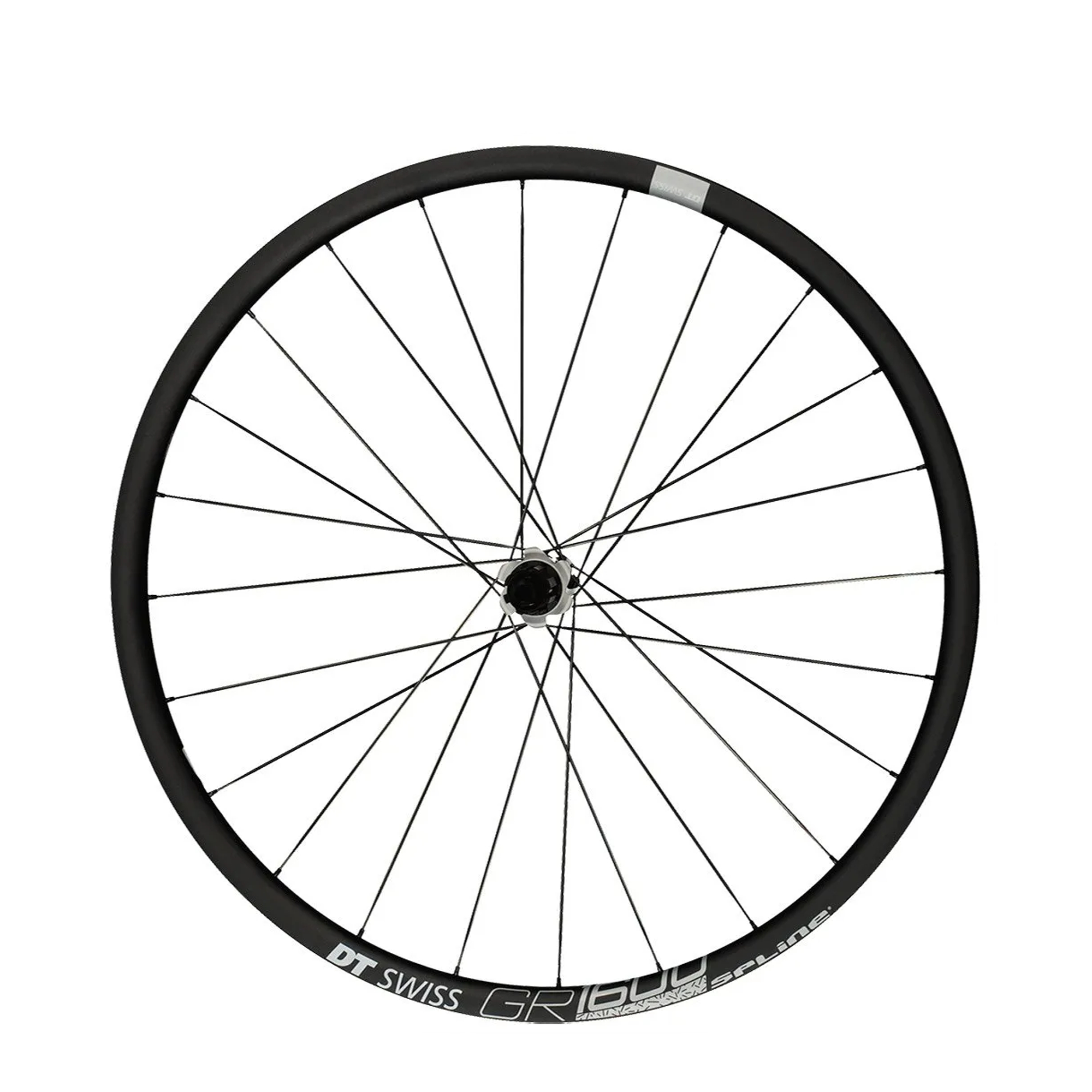
If you're gravel riding often throws up the unexpected, these are some of the most dependable gravel wheels around.
Last updated on 2nd September 2025
Our top picks in this guide are the wheelsets that we think are the best of all the gravel wheelsets we have reviewed; however, there are plenty of other options that are also worth considering. To reflect this, the Also Consider section has been extended with more options and more in-depth details for extended buyer advice.
Best gravel wheelsets you can buy today
You can trust Cyclingnews
Best gravel wheels

Specifications
Reasons to buy
Reasons to avoid
Zipp's 303 Firecrest wheelset has been around for almost half a decade yet its goldilocks design means it's still one of the best gravel wheelsets you can buy. When our product tester Guy Kesteven first reviewed these, he said they were the most quietly rapid, comfortable, versatile, responsive and enjoyable drop bar wheels he's ever ridden. Despite a fair bit of innovation in the gravel space over the last few years, we still think this rings true.
The 40mm deep rim profile feels fast and efficient without becoming worrisome in windy weather, plus the 25mm internal rim width gives all but the fattest gravel tyres a great shape. Ride quality is superb, especially when you consider it's a deep-section rim, and they have proven to be robust and durable enough to handle rough tracks and poor weather.
Even compared to the wider rims and lower pressures flooding the best gravel wheels market, the Zipp 303 Firecrests are, according to our review, a "mic-drop moment". Pair that with a user-friendly setup, the top quality warranty and a more affordable price and the Zipp 303 Firecrest is really one of the best gravel wheels around for the majority of gravel riders.
To see why we loved them so much, read our Zipp 303 Firecrest review.
Best budget gravel wheels
Specifications
Reasons to buy
Reasons to avoid
Most affordable and even some mid-range gravel bikes will come equipped with alloy wheels. While there is nothing wrong with alloy wheels, the models you get stock on bikes are usually not the best, so upgrading to a carbon set brings several advantages. Parcours Alta is an excellent option for those looking for a boost in performance at an outstanding price.
Rim dimensions are all in the ballpark for modern gravel riding measuring 36mm deep, 24mm wide internally and 33mm wide externally. Although the 1500g weight can't compete with lighter and more expensive wheelsets, it should save a good chunk of weight over a basic alloy wheelset.
Most importantly they ride well too, when Will Jones tested these wheels he found the Parcours Alta to be a step up in speed and aerodynamics compared to the stock wheels they replaced. The rims use a more flexible resin for the side walls which helps with vibration absorption without sacrificing stiffness.
There are of course some concessions to be made for the low price point. There are no aero claims so although the U-shaped rim doesn't feel draggy in any way, if you want aero performance you may be better off stumping up a little more for Parcours 47mm deep FKT wheelset. The 26t ratchet ring means hub engagement is a bit slow but for general riding, it's not an issue.
Check out our Parcours Alta gravel wheelset review to find out what makes them a great upgrade.
Best for gravel racing
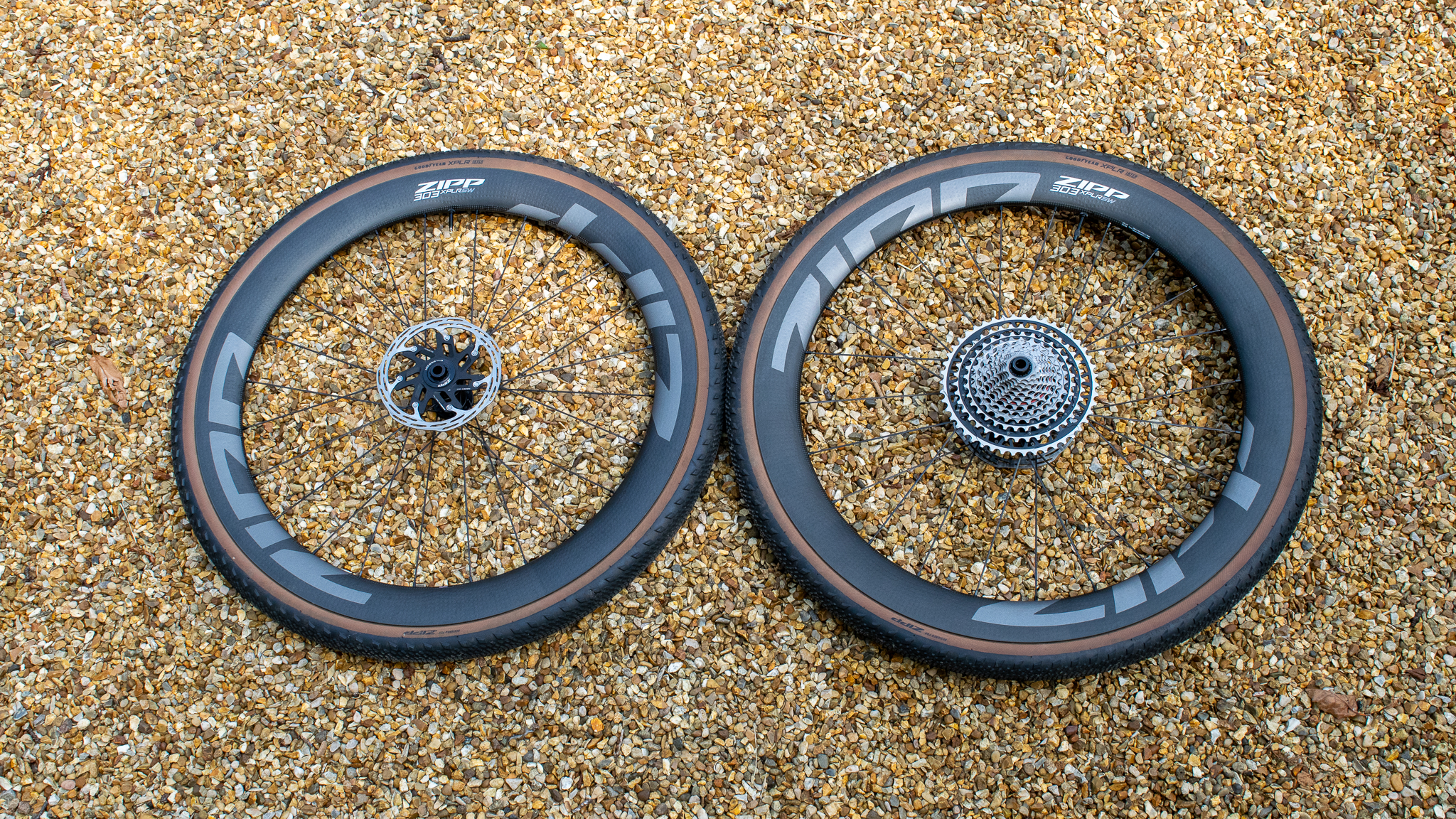
Specifications
Reasons to buy
Reasons to avoid
SRAM launched 303 XPLR SW wheelset, claiming it to be the fastest gravel wheelset ever. Chasing increased gravel racing speeds, aerodynamic considerations, support for low-pressure cornering, and pinch flat protection, the resulting spec numbers are more radical than anything else on the market.
The 54mm deep rim profile isn't a surprise, we all know a deep rim will offer better aero performance at race speeds. The rims also get Zipp's dimpled tech, which is also found on the 303 Firecrest. To support larger gravel tyres, gravel rims have been getting wider, but none come close to the huge 32mm inner diameter of the 303 XPLR SW. Despite being wider than most MTB rims, the 303 XPLR SW are designed specifically to give tyres between 40mm and 60mm a better aero profile.
Tom Wieckowski reviewed these wheels and out on the trail, the wide profile helped generate a ton of grip from the Goodyear XPLR Inter 45mm tyres that were supplied with the wheels. They aren't a gravel wheelset for smashing through technical sections, but on the type of high-speed segments they are designed for, and set up with Zipp's recommended pressures, they're very fast and surprisingly smooth.
The pursuit of speed does result in some limitations. Inserts don't work because the rim bed is too wide, and SRAM is pretty specific about the tyres that are compatible with these wheels. They are designed in conjunction with Goodyear XPLR Slick and Inter tyres, but if you want to run a different brand, Zipp has an approved tyre list for these wheels on its website.
Check out our Zipp 303 XPLR SW review to find out more about what makes these so fast.
Best for low weight
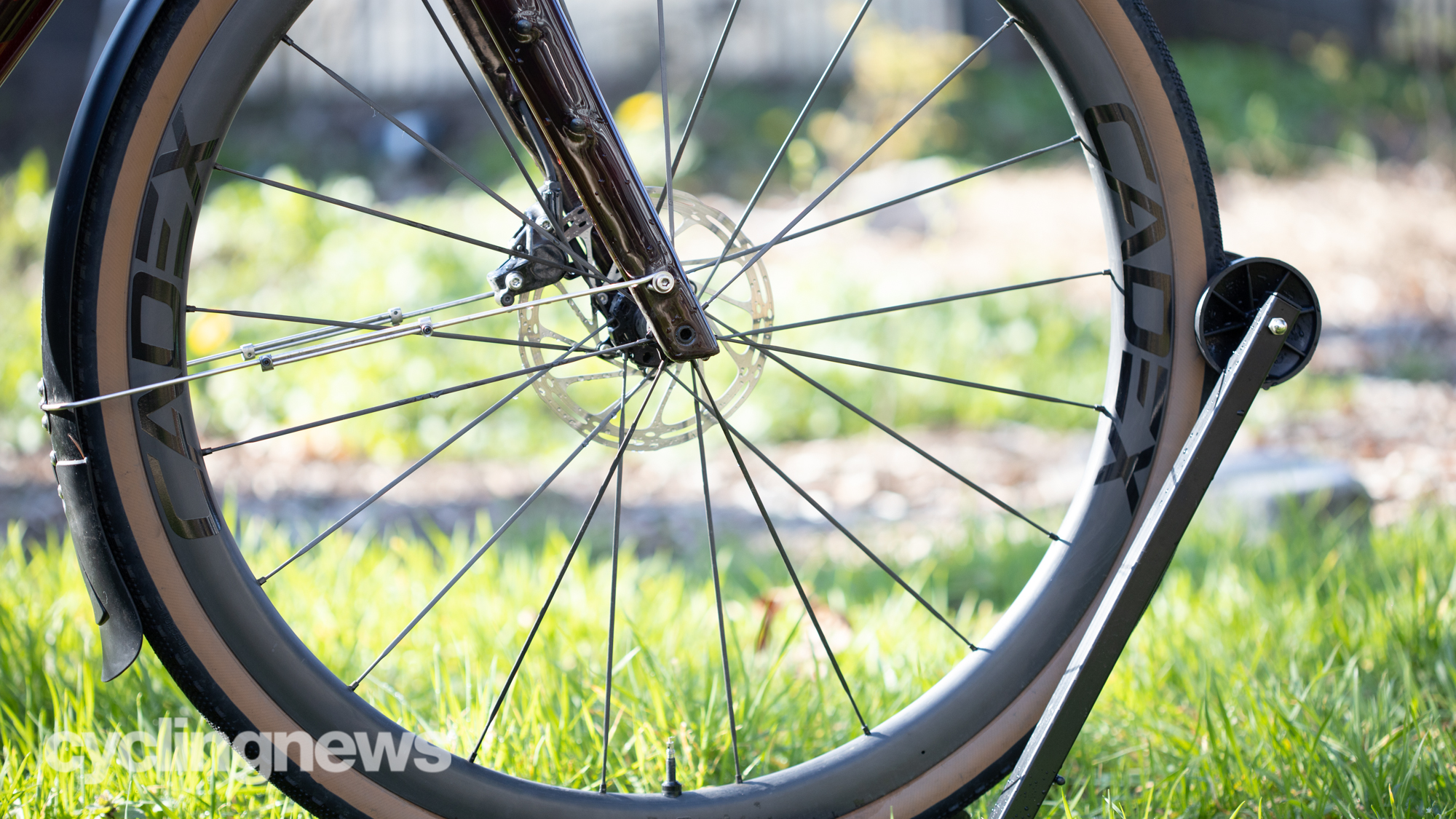
Specifications
Reasons to buy
Reasons to avoid
The Cadex 35 AR Disc wheelset sits on its own in Cadex's gravel/all-road and hits the sweet spot between lightweight and strong reliability. The 1,270g wheelset weight is impressively light and enhances climbing without the feeling that they need to be handled with care when it comes to descending down the other side. A 60-tooth ratchet driver gives the wheels a responsive kick when putting the power down too.
The 35 AR Disc has excellent, fuss-free Cadex hubs that, in our testing, have managed to shrug off the worst that winter riding could throw at them despite being subjected to around 1500 miles / 2400km in January and February. The hubs are also equipped with ceramic bearings, giving the wheels a long-lasting, smooth ride.
The hookless design shapes the tyres into the best possible shape for optimum traction, producing a rounder tyre shape for better grip and sidewall support. The only real downside for fans of all-out performance is that the wheels make no specific claims around aerodynamic efficiency, which will be a markdown for anyone with designs on being at the pointy end of a race nowadays.
To see how they held up over a nasty winter of testing, read our Cadex AR35 Disc review.
Best all-road wheels
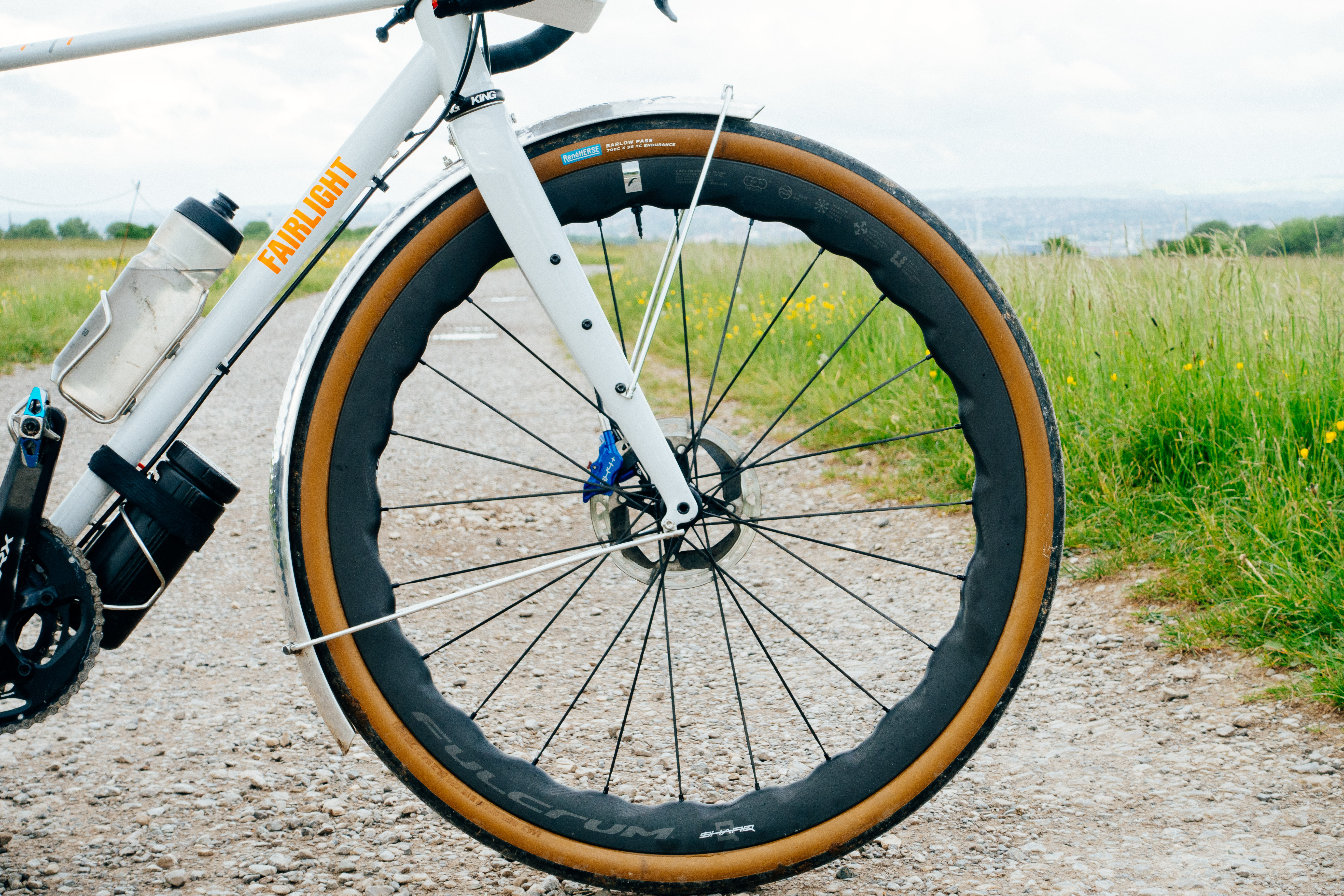
Specifications
Reasons to buy
Reasons to avoid
These striking wheels from Fulcrum aren't technically gravel wheels, instead, the Sharq's sit in the ambiguous all-road middle ground. Ignoring the labels, when Will Jones tested the Sharq's, their consistent performance on fast terrain was obvious.
Part of this performance can be attributed to Fulcrum's 2-Wave profile, which varies between 47mm and 42mm in depth. Not only does this help the wheels efficiently cut through the air but it also gives the Sharqs a noticeably stable character when dealing with crosswinds.
Will Jones remarked that they aren't as whippy and responsive as a shallower depth rim, but the low 1,440g weight means they never felt sluggish at slow speeds. The deep profile and smooth spinning ceramic bearings definitely come into their own on faster rides, which is why they are so suited to riders looking to mix up gravel and road sections.
The rims feature a 25mm, with a 'mini hook' design to ensure tyre security and compatibility. The width supports tyres from 30mm and above, covering most large road tyres and fast-rolling gravel tyres. Fulcrum has simplified the tubeless setup by not drilling the rim bed, foregoing the need for rim tape.
Want to know more? Then head to our Fulcrum Sharq review.
Best for durability
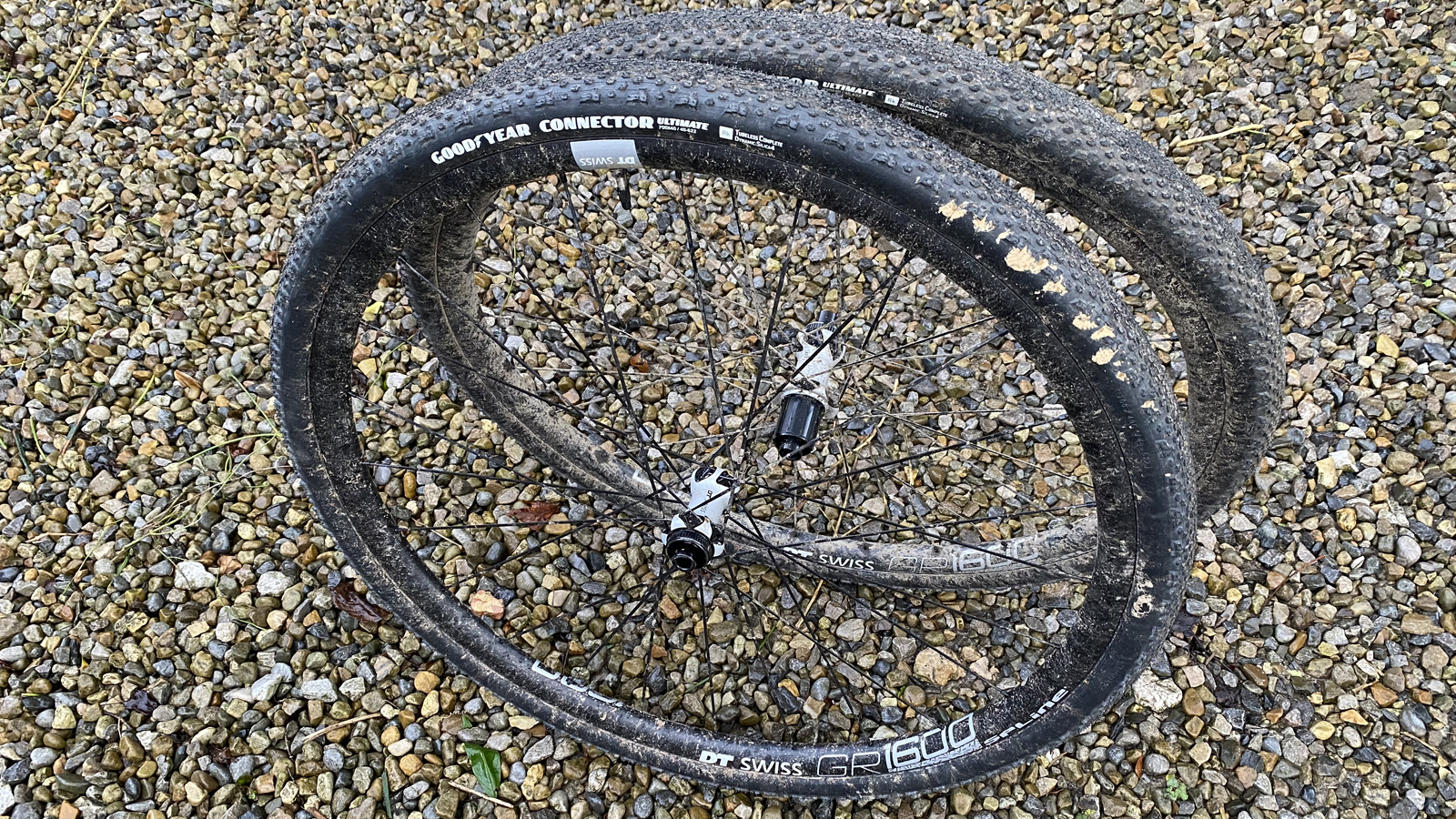
Specifications
Reasons to buy
Reasons to avoid
Compared to some of the other gravel wheels on this list, the DT Swiss GR1600 Spline 25s are pretty affordable, but that doesn't mean they compromise on quality. Of course, you get what you pay for, and this wheelset does feel chunky compared to lighter carbon models and the hub engagement is very slow, but you gain bombproof reliability that you'd expect from DT Swiss. The wide rims can take gravel tyres as fat as your frame can handle, and a great ride feel, all for a price that's easy to swallow.
Durability can be hard to quantify as it's hard to replicate and repeat impacts. That said, the GR1600 Spline 25 happily shrugged off the enthusiastic riding nature of Guy Kesteven's testing and my own experiences battering a set of these wheels down rugged gravel tracks and MTB trails. It's safe to say these are a properly tough set of gravel wheels.
In terms of ride feel, they hit a sweet spot between harsh and soft, tough enough to cope with low-pressure bumping, and a pleasure to ride on even the most punishing terrain. If you're not keen on the slow-engaging freehub, you can easily upgrade the ratchet drive. Bearing life is great too and if they do need servicing, it's also easy to pop off and service at home.
Our DT Swiss GR1600 Spline 25 review will clear up any questions you may have.
Also consider
Out of all the gravel wheels we have reviewed on Cyclingnews, the above options are the ones that we think are the best for gravel riding. However, there are other wheelsets that we think are well worth considering if you are in the market for new gravel wheels.
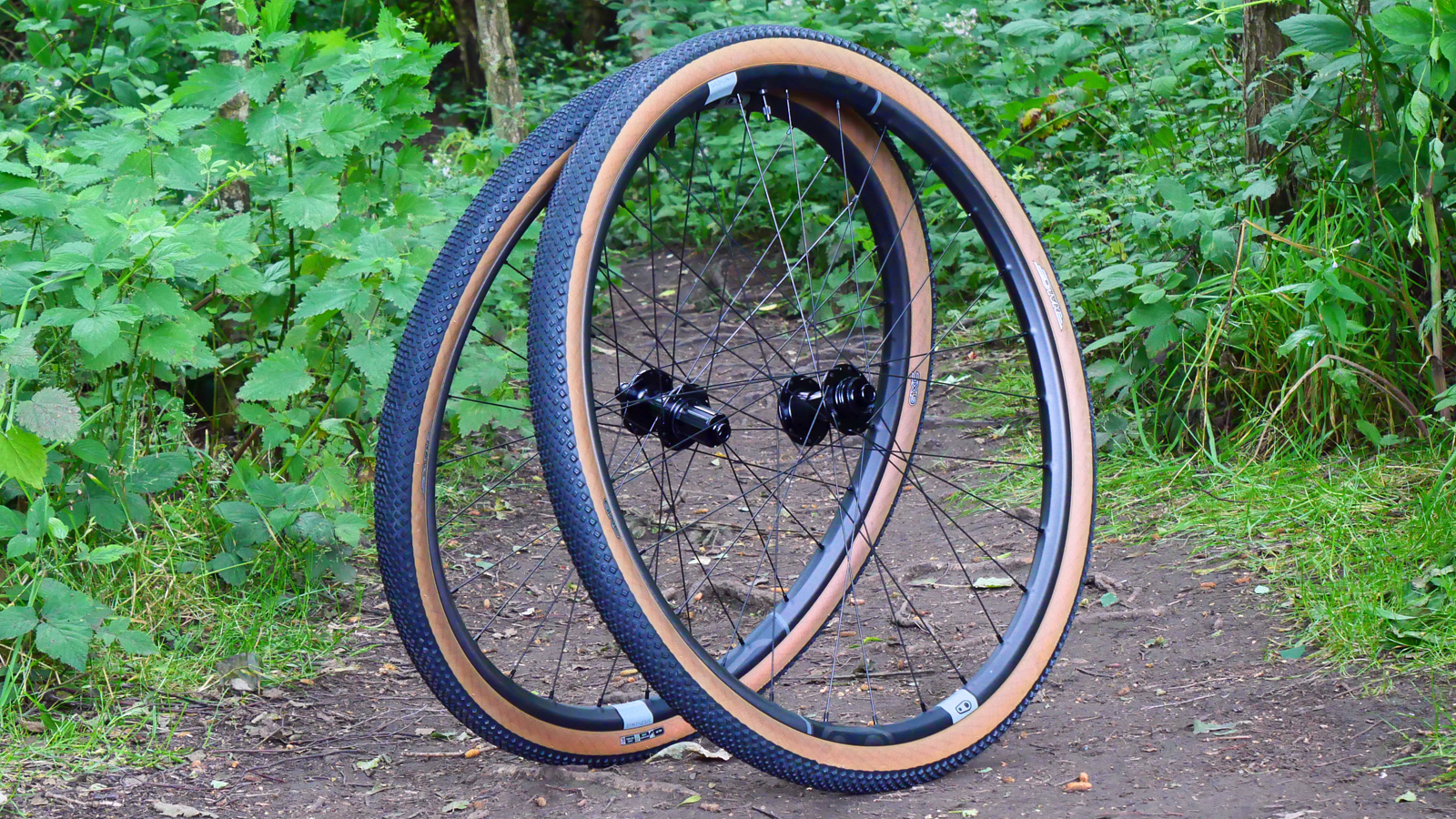
7. Crankbrothers Synthesis Carbon Gravel
Specifications
Reasons to buy
Reasons to avoid
Crankbrothers' Synthesis Carbon Gravel is one of the comfiest gravel wheelsets I have ridden. They utilise Crankbrothers' compliance-tuned Synthesis concept, a technology which has featured heavily in its mountain bike wheelsets for a while. The low-profile rim is designed to increase side-to-side (lateral) and vertical (radial) deflection, which in turn improves grip and comfort.
The result is a wheelset that absorbs impacts and conforms to the trail better, which I found noticeable when riding, particularly on terrain that is verging on unsuitable for a gravel bike. The large 26.5mm inner rim diameter gives plenty of support for large tyres, only further enhancing their trail smoothing performance.
They are built to last too, with the carbon rims proving to be extremely durable. The shallow profile 21mm rim isn't going to appeal to racers, but those riders looking for a dependable gravel wheel for bikepacking and adventurous gravel are going to appreciate the comfort, cornering confidence and robustness of these wheels.
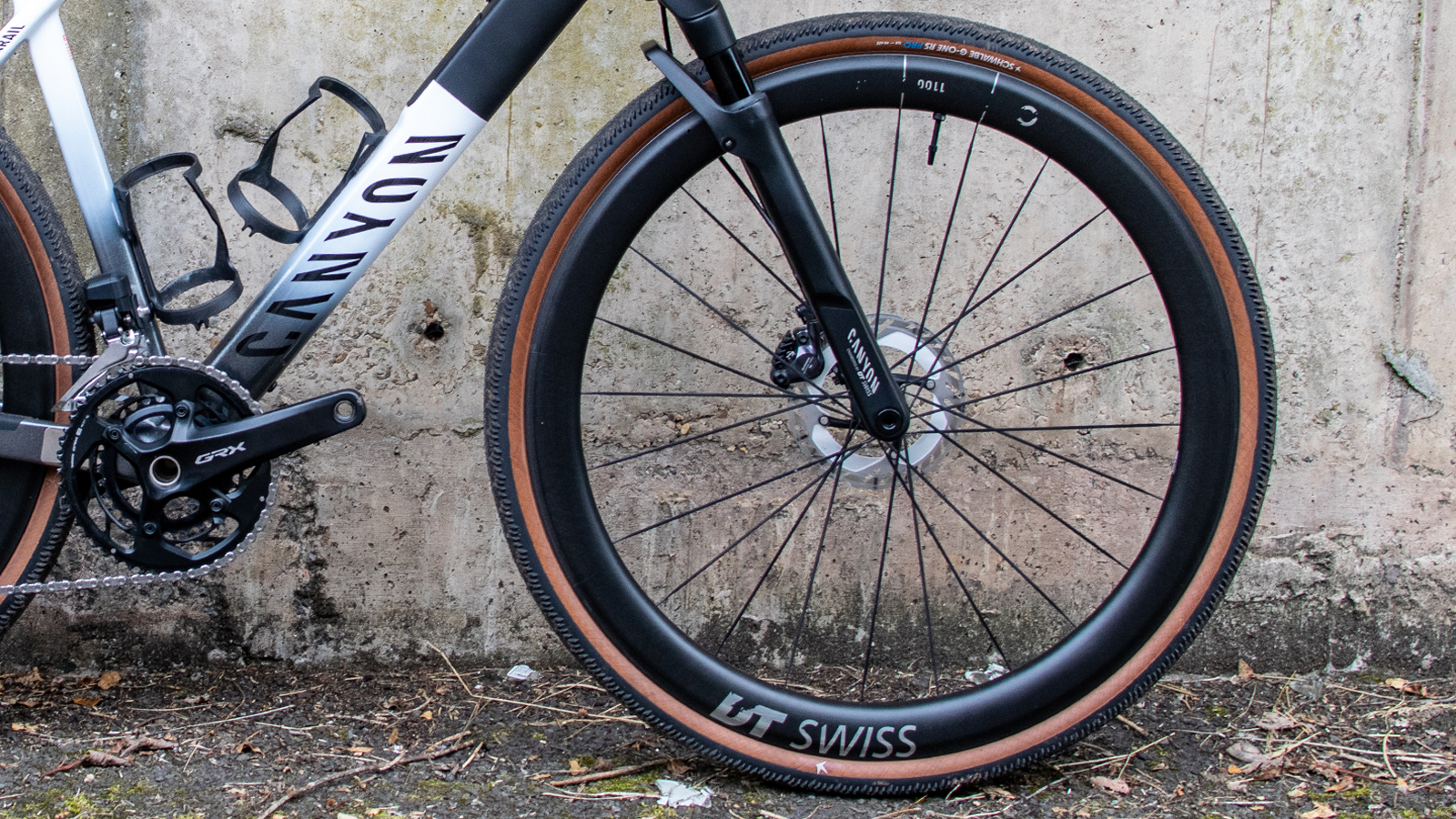
8. DT Swiss GRC 1100 Dicut
Specifications
Reasons to buy
Reasons to avoid
The DT Swiss GRC1100 Dicut wheels are top-end gravel race wheels from the Swiss brand. I test rode the 50mm deep option, which, alongside its 30mm stablemate, is built up around top-end DT Swiss 180 hubs and features a 24mm wide, hooked rim, meaning there are no tyre compatibility guidelines to worry about.
I raced the Traka 100 on these wheels and continued testing them at home, finding them to be a robust, stiff, and fast-feeling gravel wheelset that can really help eke out some extra speed and create an exciting ride feel on a bike. They helped create a responsive feel when riding, especially when doing things like climbing out of the saddle at low speeds.
The DT Swiss freehub body is easy to clean and re regrease at home without the need for special tools, but be warned it does sound very loud when freewheeling, so if this is a deal breaker for you, look at another wheelset or pro tip, you can add a little extra DT Swiss special grease to the star ratchet freehub mechanicsm to quieten it down a little bit.
Some of the silver decals rubbed off my wheel rims, which was a little surprising given how new they were.
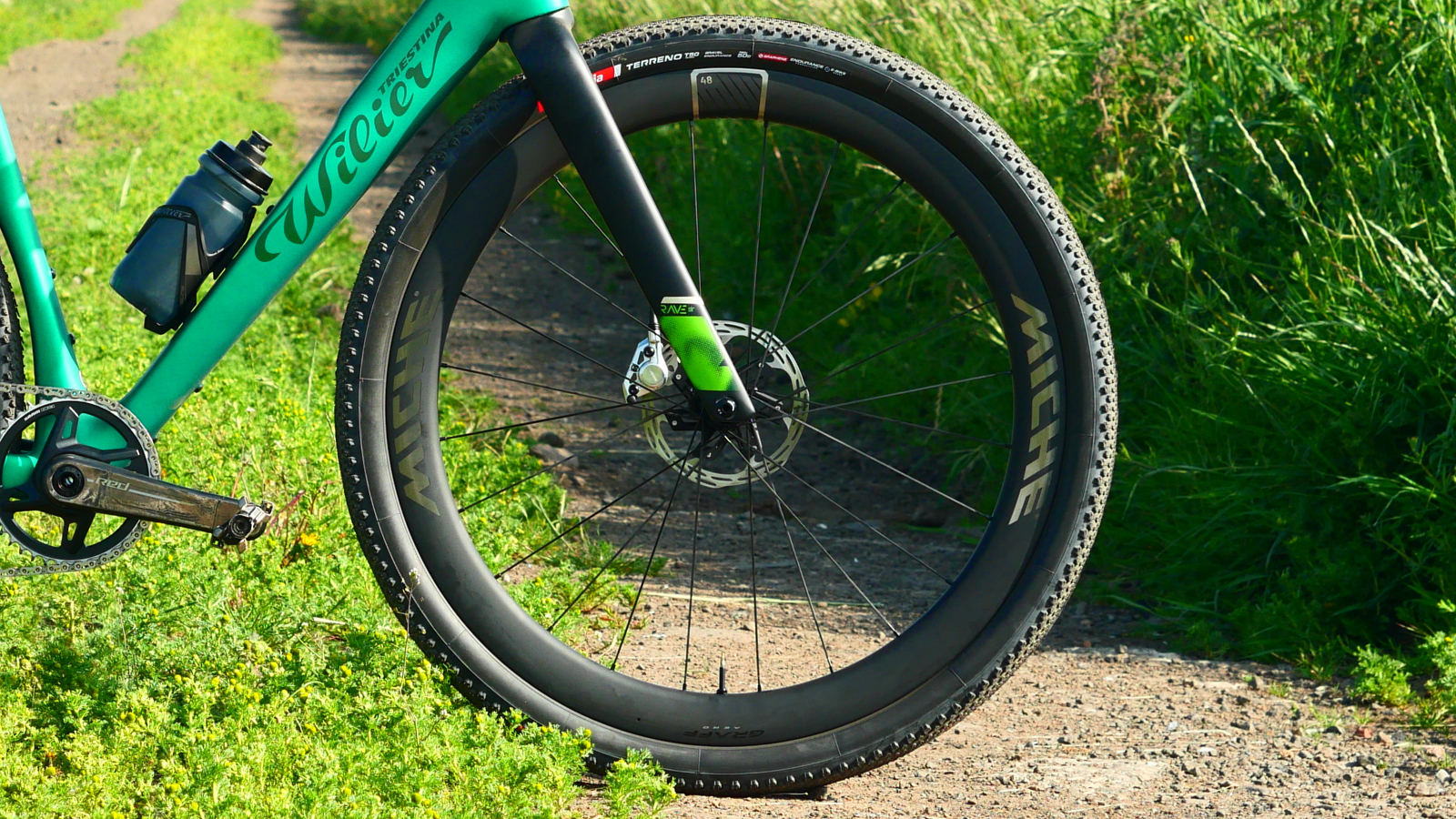
9. Miche Graff Aero 48
Specifications
Reasons to buy
Reasons to avoid
Miche's latest gravel wheelset is aimed squarely at gravel racing and was designed in collaboration with gravel racers, including Traka and Unbound winner Ivar Slik. The new wheelset is exactly what you would expect from a modern gravel race wheelset, with a 27mm inner rim diameter to support tyres between 35mm and 60mm. Aero gains are at the forefront of gravel racing tech, and if you hadn't already guessed, the Graff Aero 48's are 48mm deep. They aren't the lightest gravel wheels, but considering they are among some of the deepest gravel rims available, the wheelset weight of 1525g is pretty reasonable.
Having spent some time riding the Miche Graff Aero 48, I could feel the race craft that has been baked into these wheels. They are sharp and reactive under acceleration with well-mannered handling, particularly when fitted with bigger tyres. We haven't tested these in the wind tunnel ourselves, so I can't confirm any aero claims made by Miche. That said, I felt that they did a good job of maintaining speed on pacey rides.
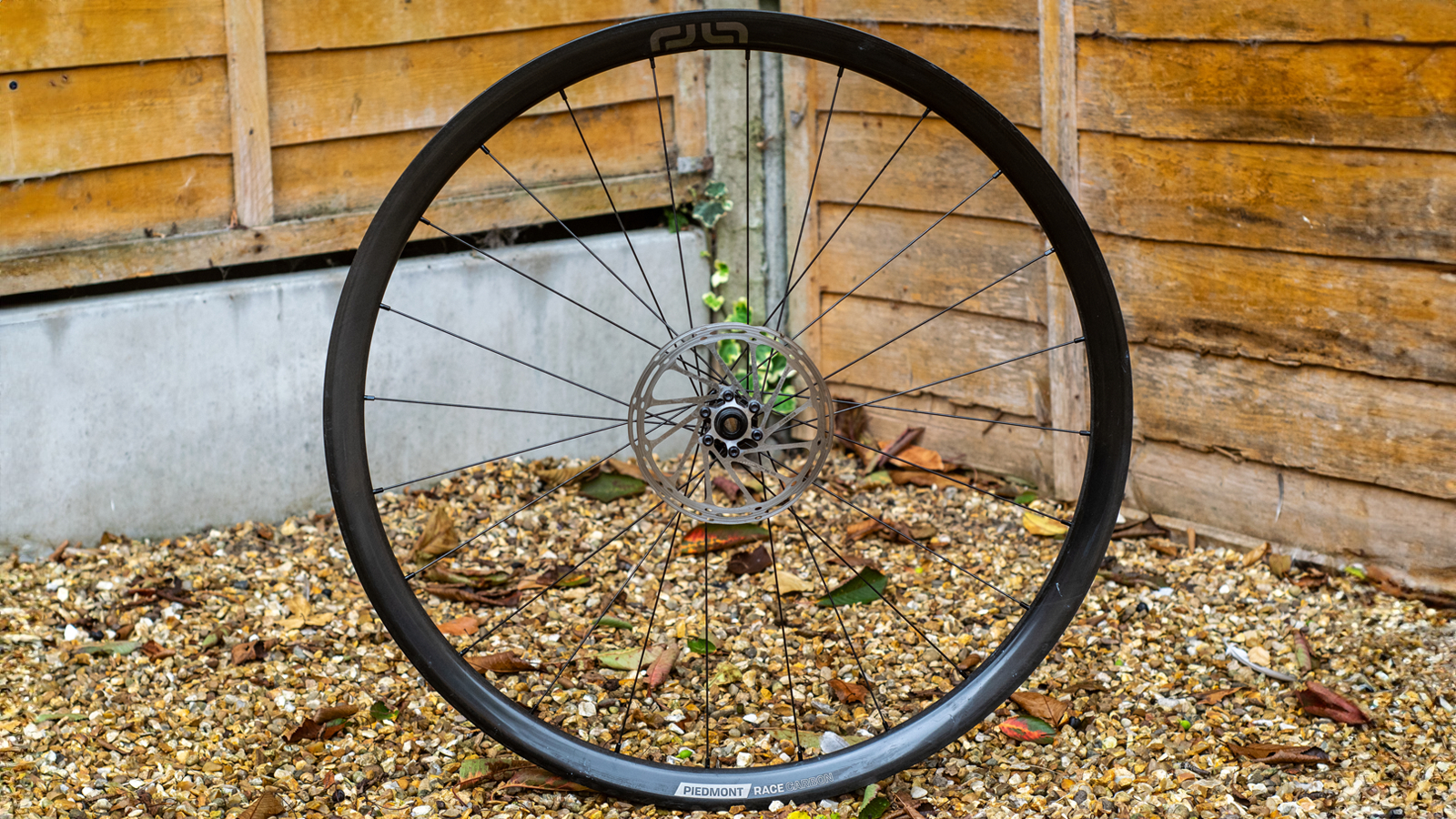
10. e*thirteen Piedmont Race
Specifications
Reasons to buy
Reasons to avoid
The e*thirteen Piedmont Race wheels are shallow, gravel wheels that are designed to do a bit of everything. The shallower depth makes these wheels feel comfortable, but they still provide a zippy ride feel. They have felt good for me everywhere, from powering up steep gravel climbs, to hunkering down on the last few on-road miles to get home post-gravel ride. I've had zero issues with them.
The wheels use a hookless, 26mm wide internal rim design, and although hookless, e*thirteen says it knows of no specific tyre requirements for gravel hookless rims and does not stipulate any. In short, you can use whatever tyres you like, though the brand recommends a 35-58mm width tyre for the best fit. Although I have tested the Continental Dubnital 2.2" tyres on them just fine.
The Piedmont race wheels have a lovely, light freehub body sound, which I really liked. If a super loud freehub body noise isn't your favourite, the sound of the e*thirteen freehub will suit you.
I found the wheels' freehub body seal wasn't the burliest or largest in the world, so err on the side of caution when doing deep cleaning, hosing or pressure washing the wheels to avoid blasting too much water in the freehub body mechanism.
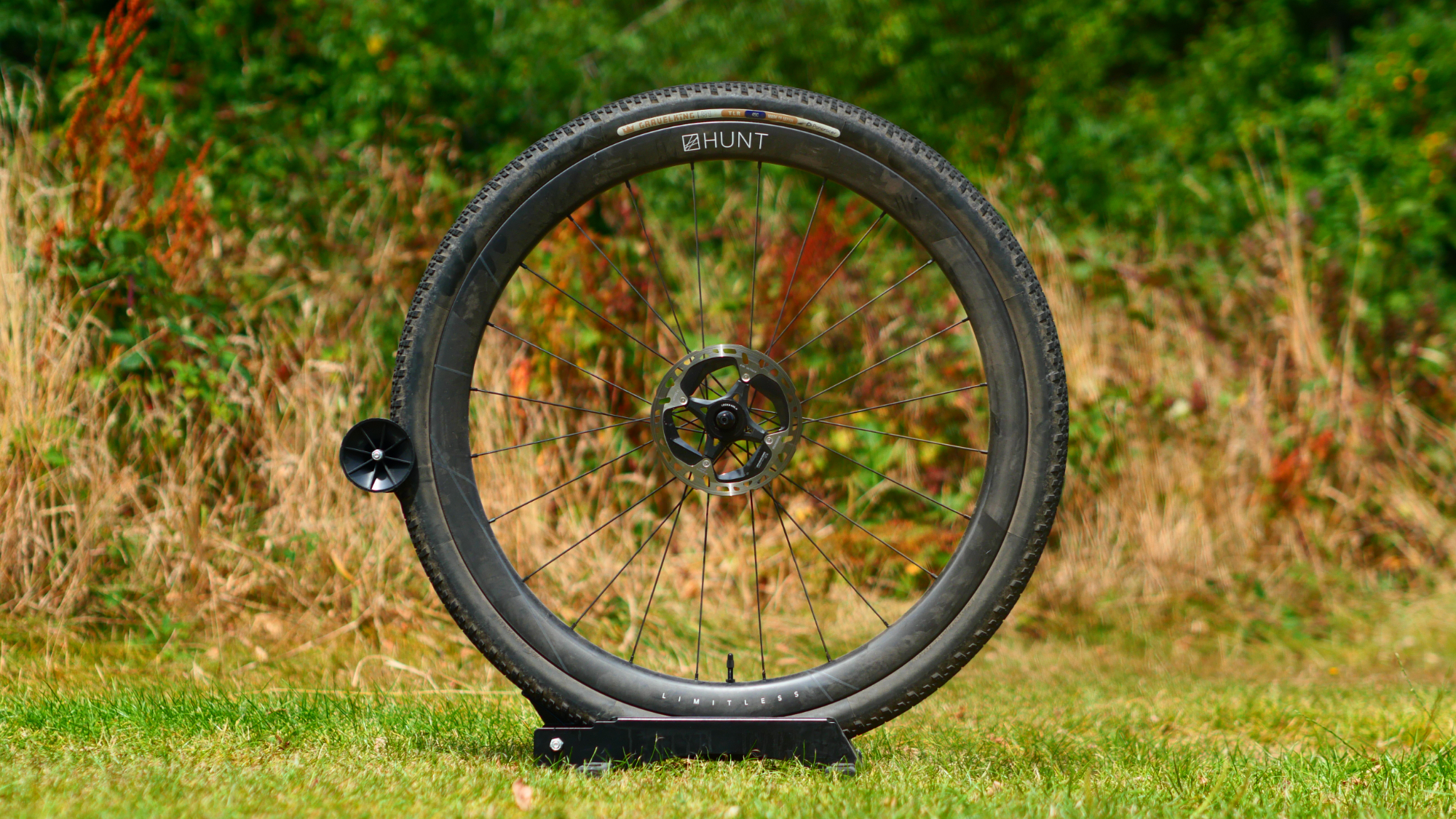
11. Hunt 40 Limitless
Specifications
Hunt is known for producing high-performance yet competitively priced wheels. At the top of Hunt's gravel roster are the 40 Limitless, which feature a front and rear specific depth and width designed specifically for gravel racing.
While we haven't had hands-on experience with the latest Hunt 40 Limitless, we really rated the previous generation Hunt 42 Limitless gravel race and adventure wheels and would expect the newer generation wheelset to offer equally impressive performance, if not better.
From our experience, the 42 Limitless wheels deep aero rim profile gives a noticeable aero advantage over a standard rim on fast rides. Handling characteristics are impressive and durability has been faultless over the 4000km I have personally ridden using these wheels.
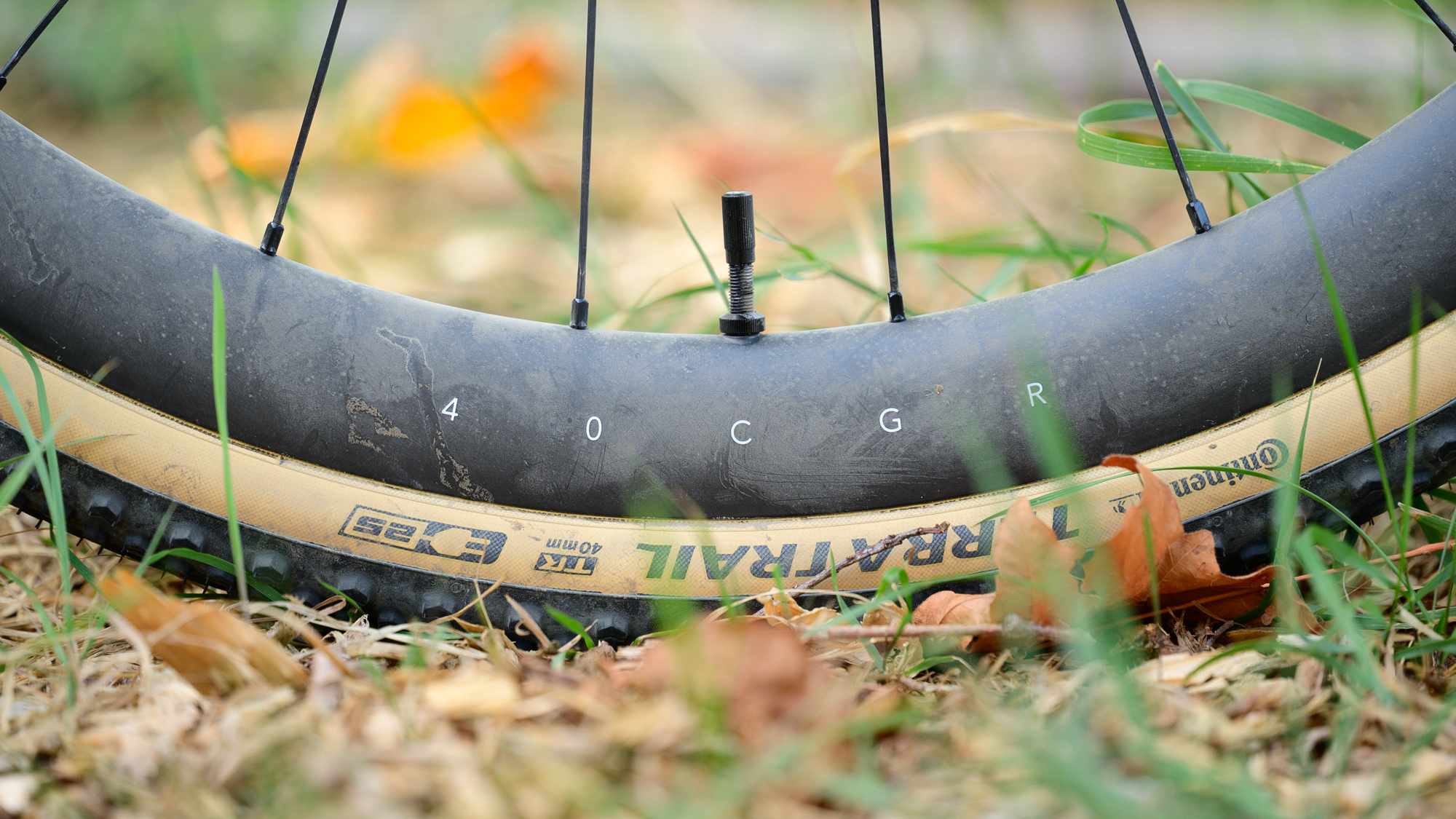
Specifications
Reasons to buy
Reasons to avoid
If you're interested in increasing the gear range of your gravel bike without resorting to a double chainset, Hunt has a Classified-equipped wheelset. The Classified x Hunt 40 Carbon Gravel Race Wheelset pairs Classified's two-gear planetary hub system with its 40mm deep carbon gravel rim. The wheelset doesn't include the Classified internals, they need to be purchased separately, which increases the overall cost, plus the system adds a little more complexity when setting up.
It's possibly a bit niche and overall complicated for most riders, however, if you want to extend your gear range without giving up your 1x drivetrain, then this is the best option. Hunt's 40 Carbon Gravel Race rims aren't as aero as its Limitless range, but ride well and are well proven by this point. The Classified system feels well-polished with smooth and fast shifting under power.
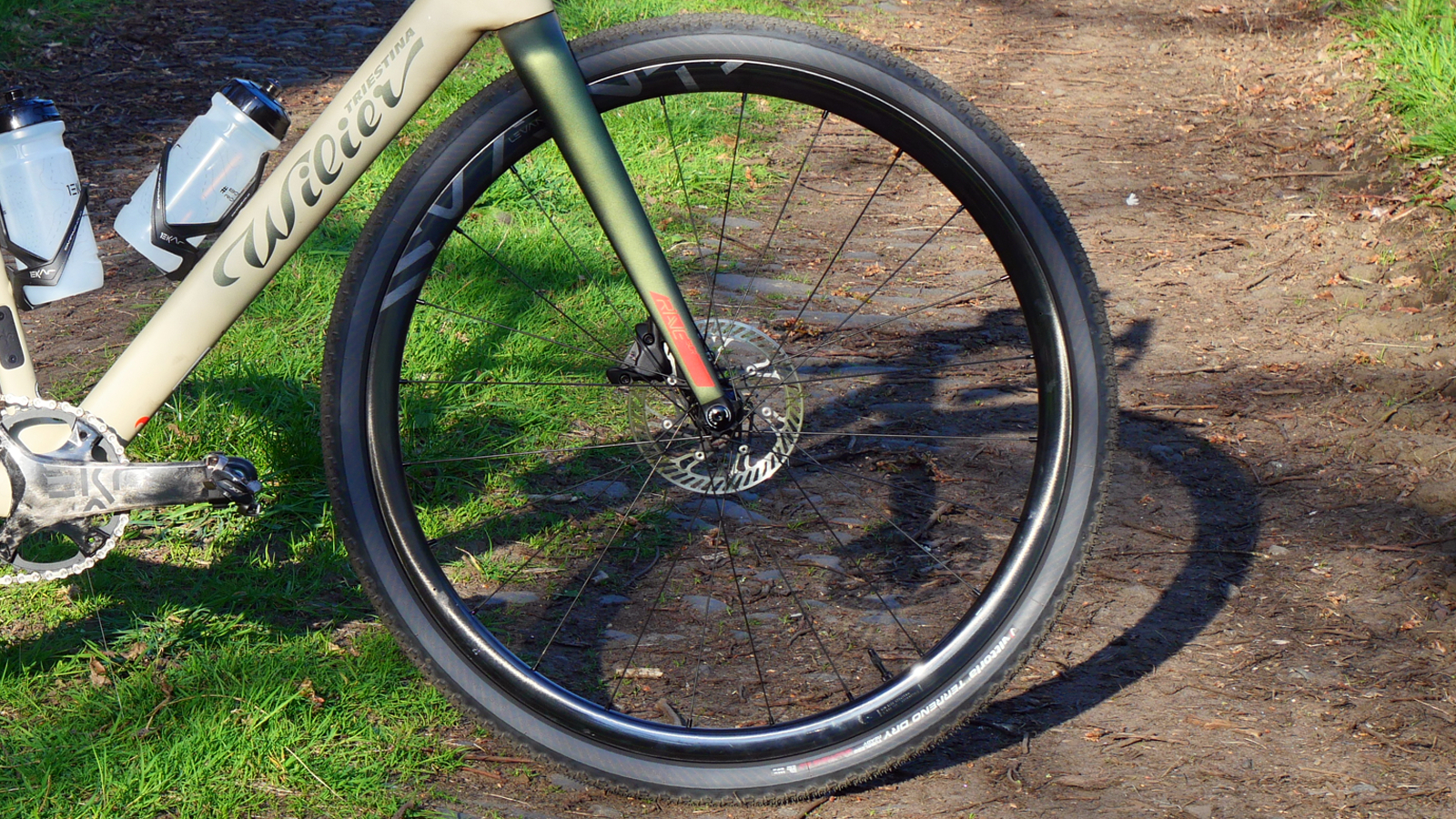
Specifications
Reasons to buy
Reasons to avoid
If you are looking for a smooth-spinning gravel wheelset with an exceptional aesthetic, the Campagnolo Levante is a great option. The Levante bearings spin effortlessly, and when freewheeling, the sensation is more akin to gliding than rolling. On well-maintained gravel tracks, they are truly wonderful to ride. The rims' C-LUX finish gives them an ultra-premium finish, only bolstering the premium feel of this wheelset. Racers will want to look elsewhere as the 30mm deep rim doesn't make any aero claims.

Specifications
Reasons to buy
Reasons to avoid
Forge+Bond is a bit of a left-field option but the F+B 25 GR wheelset has a unique selling point. The rims don't use carbon fibre, but rather a material F+B calls FusionFibre. This is a proprietary thermoplastic composite material that uses nylon, rather than epoxy. Without going deep into the manufacturing process, FusionFibre is said to reduce the number of chemicals and waste during production, plus it's possible to downcycle FusionFibre when it reaches the end of its life. Potential eco-claims aside, the F+B 25 GR gives a snappy, responsive ride feel, although the 25mm height doesn't offer any aero advantages and is expensive compared to similarly performing wheelsets.
How to choose
Look closely and you will be able to tell a difference between a gravel wheelset and a road-specific one, especially the best road bike wheels which will tip the scales at under 1400grams per pair. Gravel wheels will feature wider rims to accommodate wider, gravel-specific tyres as well as make them burlier to withstand the rigours of off-road abuse and riding.
There are different categories of riding that fall under the gravel umbrella now and this will influence your buying choice. If you are planning on competing in events and races on your gravel bike you may want to consider a stiffer, more aerodynamic wheelset that will offer some performance advantages in competition. If you want a wheelset upgrade that will cope with everything, then perhaps consider an aluminium wheelset with a higher spoke count and look into spare part availability and ease of hub servicing. Gravel riding often involves a lot more mud and water and easily serviceable components will help protect your investment long-term.
What size wheels do I need?
This is going to be led initially by your frame; if it can only run either 700c or 650b wheels then you'll have to stick to what will work for your frame. Many framesets now have the option to run either size, so which one is right for you?
Generally speaking, 650b wheels can accommodate a wider tyre than the larger 700c size, with a small sacrifice in rollover (how easily the wheel itself rolls over bumps).
In simple terms, a 700c wheel will be the choice for fast riding on narrower tyres, especially with tarmac sections sprinkled in, whereas for rougher adventures we'd recommend you opt for 650b. Smaller wheels are also stronger, so if you are worried about strength for a loaded tour then perhaps opt for the smaller size too.
It's worth nothing that from an industry perspective we've seen fewer 650b tyres being available in recent years, perhaps indicating that 700c is being settled on as the de facto standard, so if you want to be totally futureproof we'd suggest going with 700c.
Centrelock or six-bolt discs?
This decision will be dictated by the disc brake rotors you already have on your bike. Most gravel bike groupsets are equipped with centre-lock rotors, so this is the more commonly found spec in wheels too, but it's worth knowing the difference.
A centre-lock system relies on a single lockring that threads directly to the hub of the wheel to attach the disc to the hub, the same kind that holds your cassette to the freehub in most cases. It's a simpler system and allows for a lighter hub too, but with heavier rotors themselves. If you are working on your bike you can use the same lockring tool to remove cassettes and rotors.
The six-bolt mounting system uses six T25 Torx bolts to mount the rotor to the hub shell and has been around for a few decades.
Neither is advantageous enough to warrant an intentional swap, so in our opinion, stick with what you've got and save yourself from having to buy a new pair of compatible rotors. You can also buy adaptors to get around any potential issues.
Are wider rims better?
And what about gravel deep sections?
Rim width, in terms of performance for a disc brake wheelset, will refer to the internal width of the rim.
Road rims generally vary between 17mm and 21mm, but you can find gravel wheels much wider than that. To make the most of modern tyre widths, you'll want to go for something around 21mm unless you're running particularly voluminous rubber.
External width does play a part in terms of aerodynamics, but given the variety of tyre widths that are possible to run on a single rim, it's hard to offer specific aero benefits without also quoting a specific setup.
As for deep-section wheels, the aero obsession from the road has yet to translate into truly gravel-specific deep aero wheels, especially as handling is more of a consideration here. For most riders, 30mm depth is a good point to aim for in this regard.
Are carbon wheels better than alloy?
'Better' depends on the metric you are using. In terms of absolute performance, then the best gravel wheelsets are invariably going to be made of the black stuff, but they will also be significantly more expensive. Also, while they're stronger in testing, when they do fail, it's usually catastrophically, rather than alloy rims, which tend to bend or buckle.
If you're on a tighter budget, there are a myriad of fantastic alloy options out there, so don't be put off by the material they're made of.
Should I go tubeless?
The majority of decent gravel wheelsets nowadays will be tubeless-ready, as will the best gravel tyres, so even if you're still staunchly using inner tubes against the general industry trend, then you can make the switch one day if you so wish.
While tubeless for the road is a hotter debate, gravel tubeless, like disc brakes, has become the norm for good reason. It offers better puncture resistance and allows you to ride at lower pressures without risking pinch flats. Sure, you might have to carry an emergency tube just in case, and they're more of a faff to set up, but the advantages while out riding more than make up for it in our view.
If you want to make the switch, be sure to check out our list of the best tubeless sealants, so you have the best tubeless experience possible.
How do we test?
Testing gravel wheels requires testing over a lot broader range of surfaces than road wheels. We give each set a thorough run out on tarmac and broken roads, through smooth tarmac, to terrain where you could justifiably say you should have bought a mountain bike.
Rocky descents test the longevity and strength of the components, and as we're out in all weathers, we are also able to tell you if the hubs are impervious to grime over a whole winter or whether the rubber seals are as effective as a chocolate teapot.
Testing is the backbone of the tech department at Cyclingnews and how we test is taken seriously, so read on to find out more.
The latest race content, interviews, features, reviews and expert buying guides, direct to your inbox!

Josh is Associate Editor of Cyclingnews – leading our content on the best bikes, kit and the latest breaking tech stories from the pro peloton. He has been with us since the summer of 2019 and throughout that time he's covered everything from buyer's guides and deals to the latest tech news and reviews.
On the bike, Josh has been riding and racing for over 15 years. He started out racing cross country in his teens back when 26-inch wheels and triple chainsets were still mainstream, but he found favour in road racing in his early 20s, racing at a local and national level for Somerset-based Team Tor 2000. These days he rides indoors for convenience and fitness, and outdoors for fun on road, gravel, 'cross and cross-country bikes, the latter usually with his two dogs in tow.
